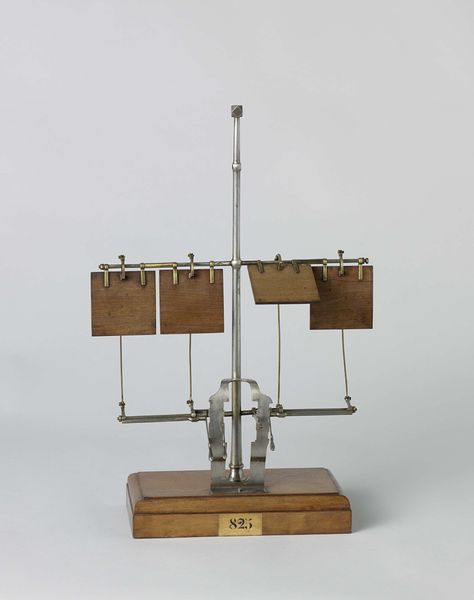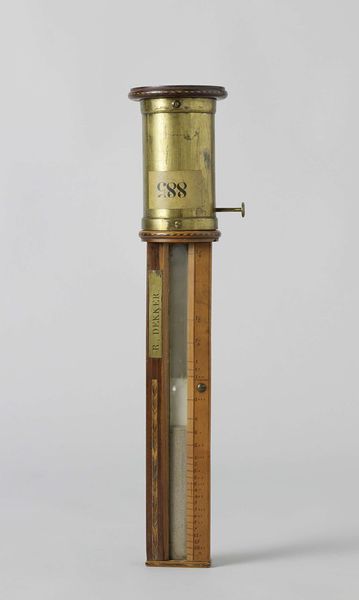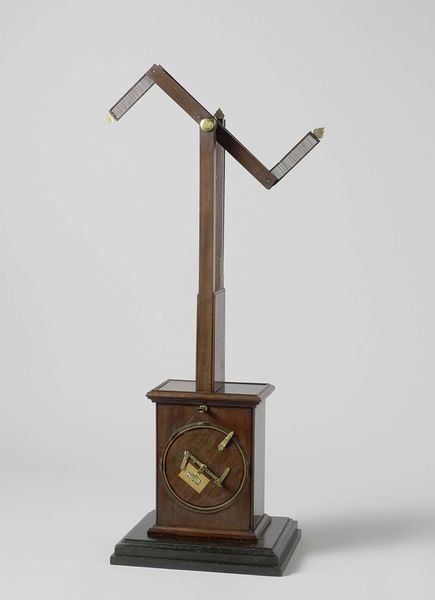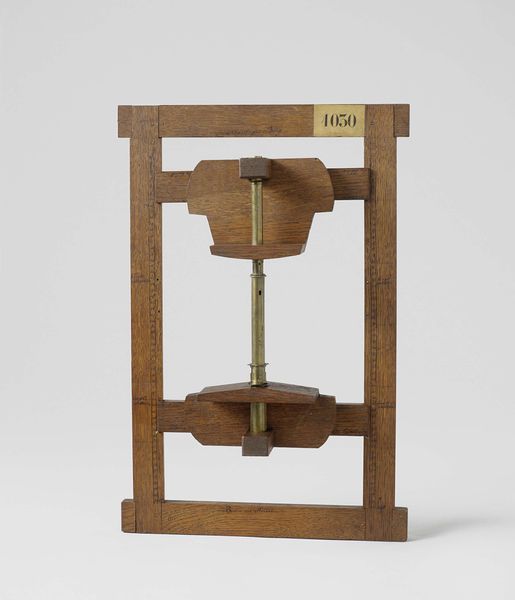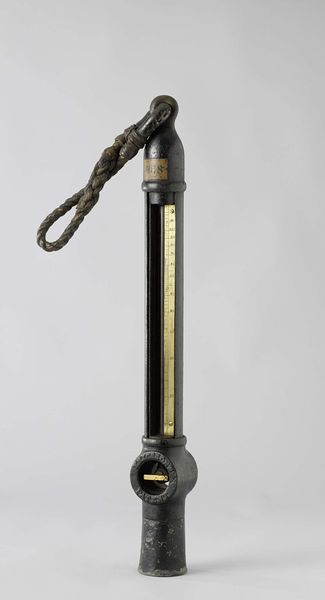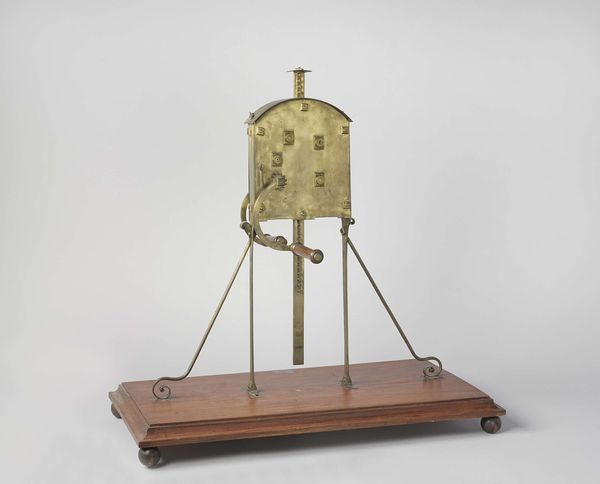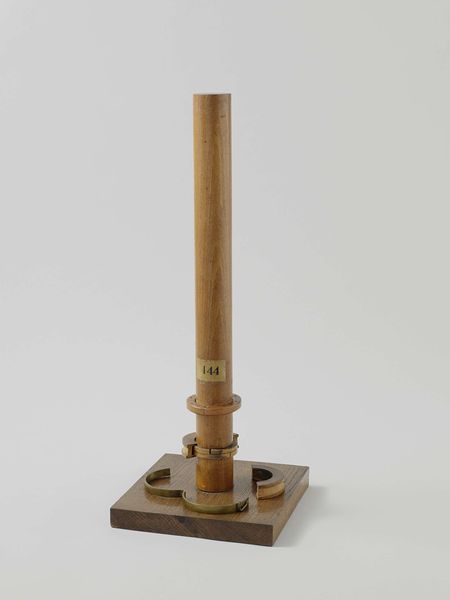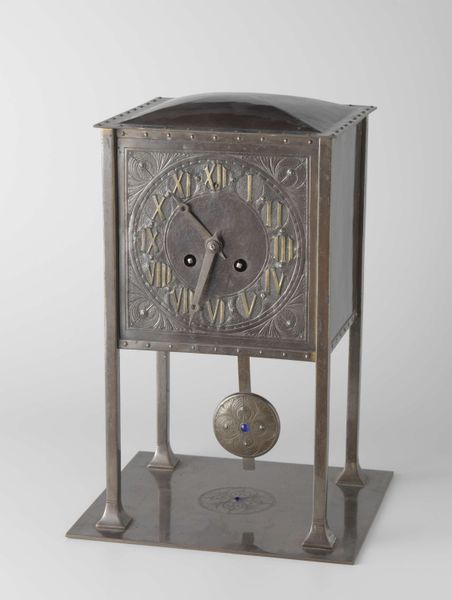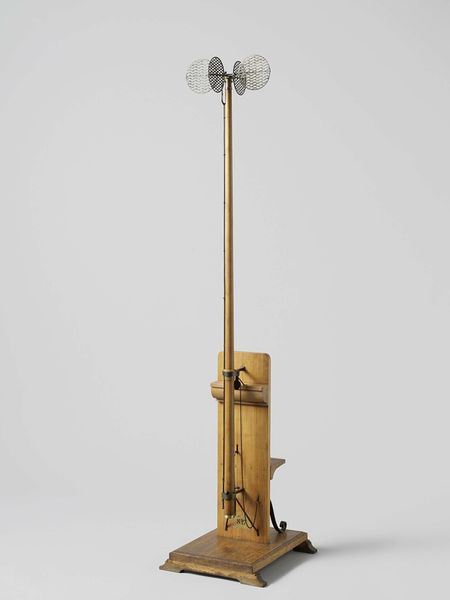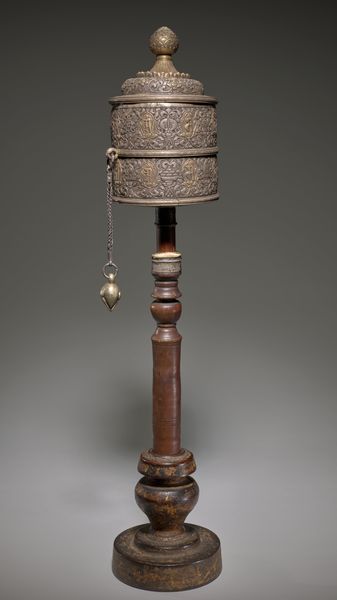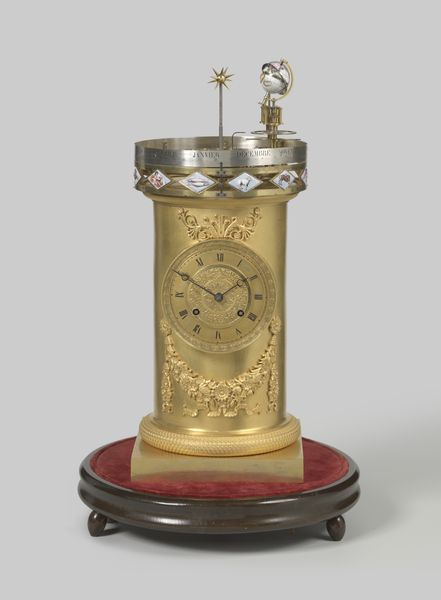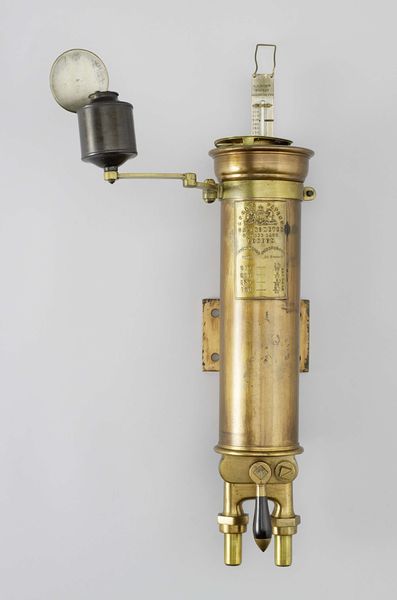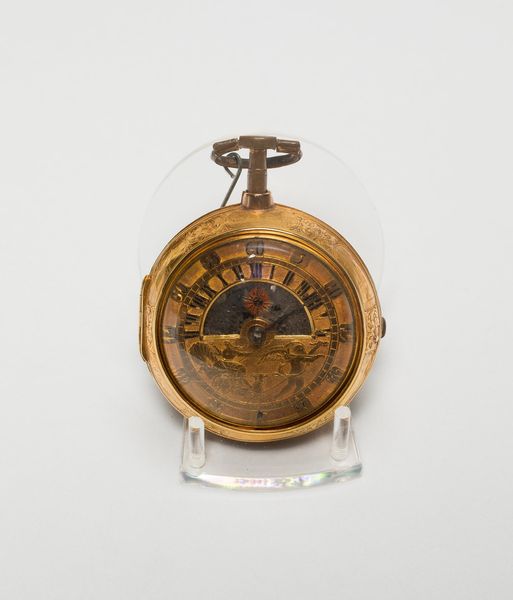
carving, metal, sculpture, wood
#
medieval
#
carving
#
metal
#
sculpture
#
sculpture
#
wood
#
decorative-art
Dimensions: Overall: 15 × 6 × 7 in. (38.1 × 15.2 × 17.8 cm)
Copyright: Public Domain
Editor: This is a lantern clock from around 1670-1680 by Joseph Knibb. It's crafted with metal, wood, and intricate carving, and currently resides at The Met. The stark lines of the weight and pendulum contrast so dramatically with the detailed face. What aspects of its form stand out to you? Curator: Notice how the concentric circles on the clock face divide it into functional zones, each demarcated by distinct numerals and indices. And the rhythmic repetition of the circular motifs is further amplified in the overall design. Editor: So the formal elements are reinforcing the functionality? Curator: Precisely. Look also at the contrast between the open fretwork above the clock face, and the solid mass of the weights below. How might we read the significance of these differing treatments of space? Editor: Hmm... The open work might suggest a liberation from the temporal constraints that the weights, symbolizing time’s passage, impose? Curator: A plausible reading! Also, reflect on the material juxtapositions – the polished brass against the matte, darkened iron. This interplay adds another layer to our interpretation. Do you notice the subtle way light interacts with the metallic surface, defining form and texture? Editor: Yes, it seems that every choice was both functional and highly considered as an aesthetic decision. I hadn't considered the material contrast before. Thanks! Curator: Indeed. Formal analysis allows us entry to wider understanding. By concentrating our gaze, new patterns become discernible.
Comments
No comments
Be the first to comment and join the conversation on the ultimate creative platform.
